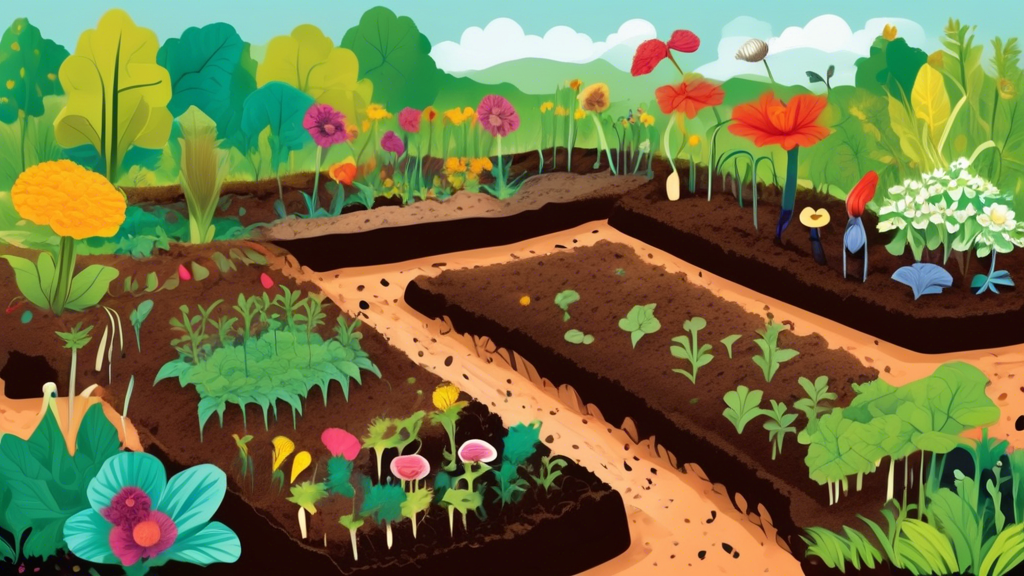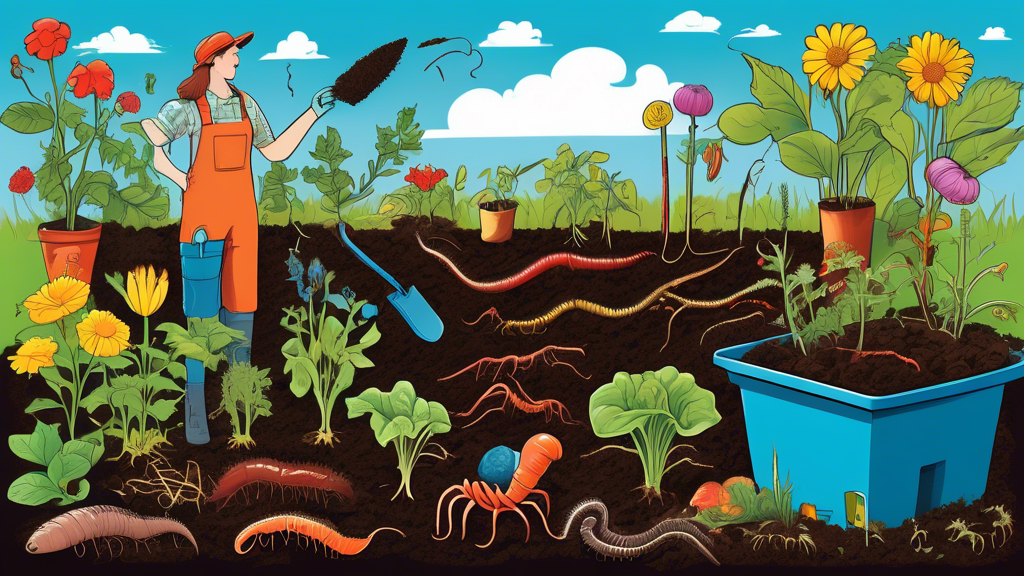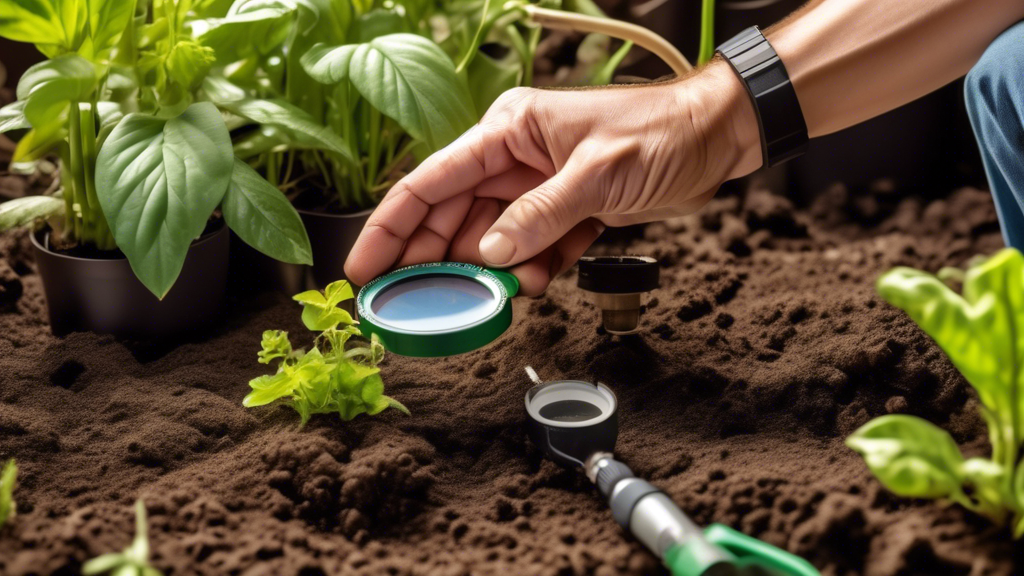
Introduction
Companion planting, a time-tested gardening technique, involves strategically
planting different crops in close proximity to enhance their growth and
protect them from pests. This method, rooted in ecological principles,
capitalizes on the beneficial relationships between various plant species.
Understanding the Benefits of Companion Planting
Companion planting offers a myriad of advantages for gardeners, promoting a
healthy and thriving garden ecosystem.
1. Natural Pest Control
One of the primary benefits of companion planting is its ability to deter
pests naturally. Certain plants emit strong scents that repel harmful insects,
protecting themselves and their neighbors. For instance, planting marigolds
alongside tomatoes helps keep away nematodes and whiteflies.
2. Attracting Beneficial Insects
Companion planting can attract beneficial insects like ladybugs, lacewings,
and hoverflies, which are natural predators of common garden pests. These
beneficial insects play a crucial role in maintaining a balanced ecosystem by
controlling pest populations.
3. Improved Soil Health
Different plant species have different root systems and nutrient requirements.
Companion planting with legumes, for example, can fix nitrogen in the soil,
making it available to other plants. This natural fertilization method
enhances soil fertility and reduces the need for synthetic fertilizers.
4. Enhanced Growth and Yield
Some plants release chemicals that promote the growth of their companions. For
instance, planting basil alongside tomatoes can improve the flavor and yield
of the tomatoes. This symbiotic relationship benefits both plants, resulting
in a more productive garden.
5. Space Optimization
Companion planting allows gardeners to maximize their garden space by growing
compatible plants together. This technique is particularly useful in small
gardens or raised beds, where space is limited.
6. Weed Suppression
Planting certain ground covers, such as clover, can help suppress weeds by
competing for resources like sunlight, water, and nutrients. This reduces the
need for manual weeding and promotes healthier plant growth.
7. Disease Prevention
Companion planting can also help prevent the spread of plant diseases. Some
plants release compounds that inhibit the growth of pathogens, protecting
themselves and their neighbors from infections.
Choosing the Right Companions: A Guide
Selecting the right plant combinations is crucial for successful companion
planting. Here’s a comprehensive guide to help you create harmonious plant
partnerships:
1. Three Sisters: Corn, Beans, and Squash
This classic companion planting trio, known as the Three Sisters, has been
practiced by indigenous communities for centuries. Corn provides a sturdy
structure for the beans to climb, while beans fix nitrogen in the soil,
benefiting both corn and squash. Squash, with its large leaves, acts as a
living mulch, suppressing weeds and retaining moisture.
2. Tomatoes and Basil
Tomatoes and basil are a match made in gardening heaven. Basil repels tomato
hornworms, whiteflies, and aphids, while also enhancing the flavor of the
tomatoes. Additionally, basil prefers partial shade, making it an ideal
companion for tomatoes, which require full sun.
3. Carrots and Onions
Carrots and onions are another classic pairing that deters pests. Onions
release a strong odor that repels carrot root flies, while carrots deter onion
flies. This mutually beneficial relationship ensures the health and
productivity of both crops.
4. Cucumbers and Nasturtiums
Cucumbers are susceptible to squash bugs, but planting nasturtiums nearby can
help keep these pests at bay. Nasturtiums act as a trap crop, attracting
squash bugs away from cucumbers. The bright flowers of nasturtiums also
attract beneficial insects, further enhancing pest control.
5. Cabbage and Dill
Cabbage white butterflies are a common pest of cabbage family crops, but dill
can help deter these butterflies by attracting their natural predators, such
as parasitic wasps and hoverflies. Dill also improves the growth and flavor
of cabbage.
6. Roses and Garlic
Garlic is an excellent companion for roses, as it repels aphids and other
pests that commonly infest these beautiful flowers. Garlic also helps prevent
black spot, a fungal disease that can damage rose bushes.
7. Lettuce and Marigolds
Marigolds are known for their pest-repellent properties, making them ideal
companions for lettuce. Marigolds deter aphids, whiteflies, and other insects
that can damage lettuce plants.
8. Strawberries and Thyme
Thyme is an aromatic herb that repels cabbage slugs, which are known to feed
on strawberry plants. Planting thyme around strawberry patches can help
protect these delicious fruits from damage.
9. Beans and Potatoes
Beans and potatoes are not ideal companions, as they can inhibit each
other’s growth. Beans are legumes that fix nitrogen in the soil, which can
be detrimental to the growth of potatoes.
10. Onions and Peas
Onions and peas should also be planted separately, as they can negatively
impact each other’s growth. Onions release a substance that can inhibit the
growth of peas.
Creating Your Companion Planting Plan
Now that you have a good understanding of companion planting and some
beneficial plant combinations, let’s create a plan for your garden:
1. Assess Your Garden
Consider the size and layout of your garden, as well as the amount of
sunlight it receives. This will help you determine which plants are suitable
for your space.
2. Identify Your Target Crops
Decide which vegetables, fruits, or flowers you want to grow and prioritize
them based on your preferences and local growing conditions.
3. Select Compatible Companions
Refer to the companion planting guide above or other resources to identify
suitable companions for your target crops.
4. Plan Your Planting Scheme
Create a visual plan of your garden, indicating the location of each plant.
Consider the mature size of the plants and their spacing requirements.
5. Timing is Key
Pay attention to the planting times for each crop and ensure that you plant
compatible species together at the right time for optimal growth.
6. Observation and Adaptation
Regularly observe your garden and monitor the health of your plants. Adjust
your companion planting plan as needed, based on your observations and
experiences.
Conclusion
Companion planting is a rewarding gardening practice that can enhance the
health, productivity, and sustainability of your garden. By understanding the
beneficial relationships between different plant species, you can create a
thriving ecosystem that benefits both plants and the environment. Embrace the
wisdom of companion planting and enjoy a bountiful and beautiful garden.






